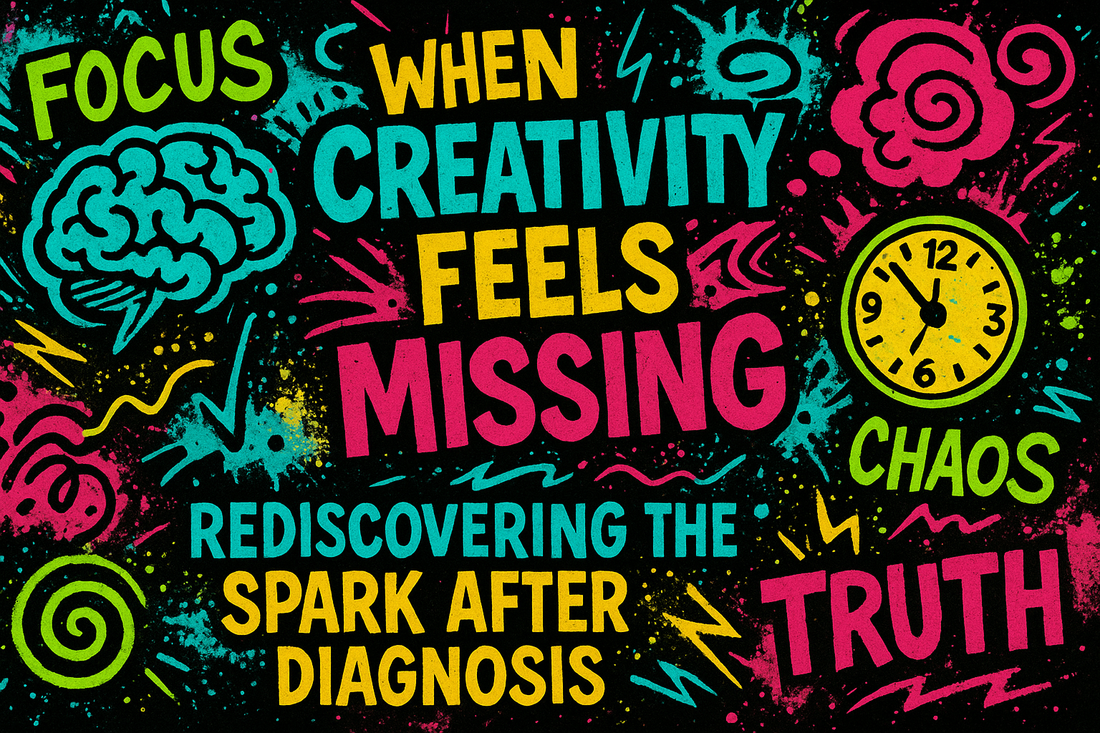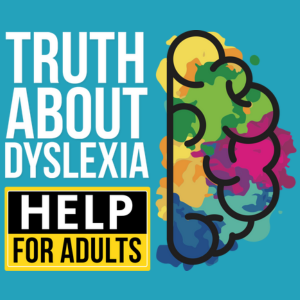
When Creativity Feels Missing - Rediscovering The Spark After Diagnosis
Share
Ever felt a surge of excitement when you create something new, only to doubt yourself moments later? Dyslexia can throw curveballs at any age, and it’s not unusual for many of us to discover it later in life. In today’s episode, Stephen Martin goes into the ins and outs of how dyslexia can shape creativity in ways you may not expect.
He reminds us that creativity doesn’t have to be about painting or sculpting. It can be about finding original ways to solve everyday problems or bringing people together. He wants us to see how our unique minds can open doors to fresh solutions, stronger connections, and even an effortless “flow” state that lets ideas pour out naturally.
Diagnosed Later in Life
Getting a dyslexia diagnosis in adulthood can feel like somebody’s suddenly rearranged life’s puzzle pieces. On one hand, it offers relief to finally have an explanation for why certain tasks are trickier. On the other, you might wonder, “Why did no one spot this before?” or “How does this change who I am?”
Stephen explains that those questions are normal, especially if you spent years thinking you were just “disorganised” or “slow.” The truth is, dyslexia comes with a set of strengths: creative problem-solving, deep empathy, and the knack for connecting people who might otherwise remain strangers. Those skills can remain hidden when we’re focused on what we can’t do, but they become more obvious once we start to lean into our creative instincts.
Creativity Is More Than Art
One of Stephen’s biggest points is that creativity isn’t confined to brushstrokes and sketches. It can appear in how you join the dots in a business project or how you notice a quiet colleague’s brilliance and help them shine. It’s about spotting potential in places others overlook.
He moves beyond the typical definition of creativity—think painting or writing—and includes the subtle art of problem-solving. If you’re constantly coming up with ways to organise social events or turn chaos into a manageable to-do list, that’s creativity. It might not end up in a gallery, but it’s no less significant than a painting on a wall.
“Confidence often acts like fuel. Once you’ve got a spark of self-belief, your creativity can really take off.” — Stephen Martin
This quote captures how believing in your own abilities makes it easier to share your creative side with the world. It’s frequently the missing ingredient for dyslexics who have spent years feeling misunderstood.
Building Confidence and Finding Flow
Stephen suggests that the first step to unlocking your creativity is self-awareness. Try noticing what energises you or when you lose track of time because you’re so absorbed in the task. Those are clues that you’ve hit a “flow” state. It’s a feeling of deep focus, a sense of ease, and enjoyment in what you’re doing.
When you’re in flow, you might dive into a project and forget to eat lunch, or you might design a spreadsheet that automates mundane tasks for your team. It’s not always flashy, but it’s valuable. Especially for those with dyslexia, riding that wave of intense focus can boost your sense of accomplishment and sharpen your problem-solving skills.
Confidence grows when you see how your dyslexic mind works differently and better appreciate what makes you stand out. If you’re hesitant, Stephen advises starting small, maybe by solving a minor problem at home or volunteering to plan a community event. Each success builds your creative muscles and shows you just how capable you are.
Embrace Your Strengths and Connect with Others
Dyslexics often excel at connecting people. You might be the one who introduces a friend from one area of life to someone else who shares a passion for a specific hobby. Or maybe you’re the person who breaks down barriers in a group so that everyone feels heard. That talent is especially helpful in workplaces or communities where people often stay in their own little corners.
Stephen believes this knack for connection is tied to creativity. After all, it isn’t just about making stuff, it’s about bridging gaps and seeing possibilities for collaboration. By leaning into this strength, you can help others remain open-minded and spark their creativity too.
If you’re looking to grow, consider joining communities that help you see what you’re capable of. For example, visit rightbrainresetters.com to find like-minded people who can support your journey. You might also hop over to addednutrition.com for a 20% discount on products that keep your mind in tip-top shape. A calm, nourished body helps you tap into your creativity without distraction.
- Check in with yourself: Where do you already feel naturally creative?
- Notice who you connect and how you bring people together.
- Focus on building confidence through small wins.
- Seek that “flow” state, whether it’s writing or designing spreadsheets.
- Embrace creativity in all forms—from doodles to problem-solving.
Takeaways
- Getting diagnosed later in life can be both enlightening and challenging.
- Creativity isn’t just about drawing or painting; it can be about solving unique problems.
- Flow states can supercharge your ability to create and stay motivated.
- Connecting people and ideas is a powerful form of creativity.
- Building confidence in your creativity can make a real difference.
Ready to dive deeper? Press play on the podcast at the top of the page and hear Stephen’s full story and tips. There’s no rush. Go at your own pace, and remember: there’s more to your dyslexic mind than meets the eye. When you find what sparks your creativity, the possibilities can feel endless.

